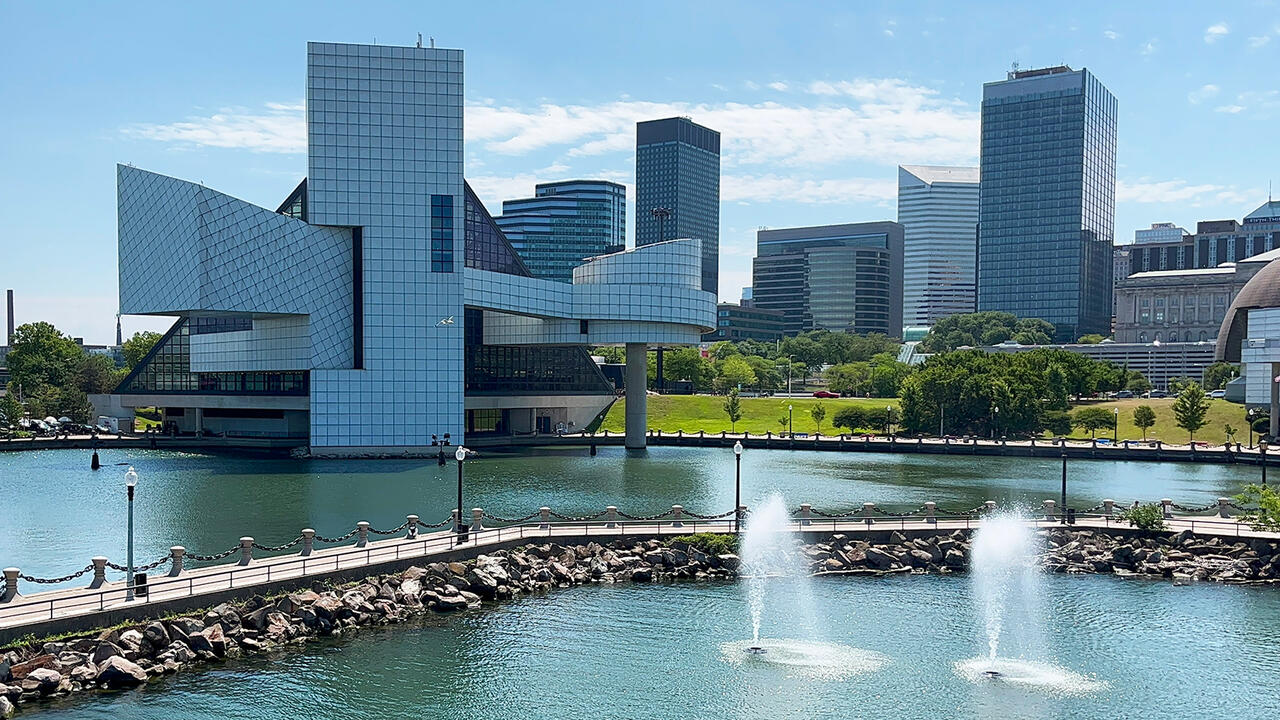Oscar Tuazon’s ‘Water School’ Targets Pollution and Climate Change
The artist’s installation, on view at the Broad Art Museum at Michigan State University, draws from the legacy of the permaculture movement and the lessons of Flint
The artist’s installation, on view at the Broad Art Museum at Michigan State University, draws from the legacy of the permaculture movement and the lessons of Flint

Water dominates both the ecosystem and the artistic imagination in Oscar Tuazon’s ‘Water School’. In 2018, Tuazon founded the Los Angeles Water School (LAWS), an educational centre espousing the view that water is the connective tissue between people and their surroundings. While LAWS remains active in downtown LA, Tuazon has since reprised his ‘Water School’ in Nevada, Minnesota and Michigan – three regions where the politics of water are often divisive. The latest incarnation, at the Eli and Edythe Broad Art Museum at Michigan State University, presents a collection of Tuazon’s prototypes for sustainable living along with ephemera, such as architectural drawings by R. Buckminster Fuller and copies of The Mother Earth News magazine, tracing the 1960s and ’70s emergence and zenith of the US permaculture movement.

Zome Alloy (2016), the show’s centrepiece, is a large, multi-room polyhedral structure made of unfinished wood modelled on the Zome House (1971) by Steve Baer, a pioneer of passive solar architecture. Baer’s Zome House, a modified version of Fuller’s geodesic domes, utilized drums of water and adobe architecture to absorb heat without a carbon footprint. Tuazon’s Zome Alloy serves as a study centre within the MSU Broad, containing books from the MSU library on topics ranging from ecology to Earthworks to anthropology.
Surrounding Zome Alloy, and in a smaller adjacent gallery, are examples of passive solar architecture Tuazon based on designs in Dome Cookbook, Baer’s 1968 treatise on off-the-grid living and DIY sustainability. For Curtain Wall (2013), two panes of glass encase polystyrene beads that insulate a home at night and drain out into a steel drum in the morning. Suspended from the museum’s ceiling, Rainbender (LAWS) (2018) is designed to capture water in regions with less than 38 centimetres of rain annually. Tuazon’s ‘water window’ is a trapezoidal glass monolith housing a modernist grid printed with a circular pattern (a reference to Baer’s original design), collecting heat and filtering light from the museum’s windows into the Zome Alloy.

While some of Tuazon’s past installations, such as dépendance (2013) and his 2012 Whitney Biennial project, For Hire, interrogated the architectural spaces in which they were installed, ‘Water School’ demonstrates the artist’s commitment to making ‘social works rather than decorative objects,’ as states the LAWS Kickstarter page. (Several educational talks and workshops are part of the exhibition’s programming.) At the same time, the museum context mitigates the prototypes’ efficacy as it draws attention to their aesthetic appeal and to the problem of divorcing utilitarian objects from their function. Installed within the futuristic Zaha Hadid-designed museum, Zome Alloy becomes a failed experiment, its use-value suppressed by a streamlined monument to postmodern design.
The tension between Tuazon’s gestures and the museum context blurs the boundaries between activism and art, architecture, minimalist sculpture and performance. It also raises questions about the extent to which institutional art can incite change, and the ways in which sustainable living might scale beyond the utopian ambitions of the few to reach the many. Tuazon adds another dimension by mobilizing this tension to critically probe the genre of social practice.

Water plays a key role in Michigan’s economy, politics and social life. Proximity to clean water hasn’t guaranteed access to it to those living in the state’s lower-income areas, as the ongoing Flint water crisis makes painfully clear. In 2014, the emergency manager in Flint, a working-class, largely African-American community, changed the city’s water supply to the polluted Flint River in an attempt to save money. The water was discovered to contain such high levels of lead that it is still unfit to drink.
This context is regrettably absent from Tuazon’s show, aside from a cursory reference. A series of maps lining the wall near Zome Alloy trace the ‘Water School’ project through its various iterations, concluding with East Lansing, where Michigan State University is located. The maps are painted over to highlight each region’s waterways: East Lansing is covered with slender veins of azure, indicating its many streams, while the Flint River is demarcated by alarming swaths of crimson.
While Flint has come to symbolize the disastrous consequences when public officials prioritize self-interest over their constituencies, the crisis has eclipsed the fight over other Michigan waterways: for instance, Enbridge’s ‘Line 5’ pipeline, which leeches oil into the Straits of Mackinac, or the Nestlé corporation’s siphoning of Great Lakes water. The underdevelopment of these issues feels like a missed opportunity. Permaculture methods, exhibited in the domes, and Baer’s innovations from a half-century ago are also only partially explored, as are the water challenges that the contemporary maps and geospatial images illuminate. Water rights have a history, too; permaculture, a present and future. Yet despite these omissions, Tuazon opens a discussion that invites participation by privileging learning over expertise. In 2005, environmental activist Bill McKibben wrote that climate change ‘hasn’t registered in our gut; it isn’t part of our culture. Where are the books? The poems? The plays? The goddamn operas?’ ‘Water School’ is an earnest start.
‘Oscar Tuazon: Water School’ runs at the Eli and Edythe Broad Art Museum at Michigan State University until 25 August 2019.
Main image: Oscar Tuazon, Zome Alloy, 2016, wood, aluminum sheeting, and hardware, 4.4 × 7 × 10.7 m. Courtesy: the artist and Galerie Eva Presenhuber, Zurich. Photo: Eat Pomegranate Photography






















